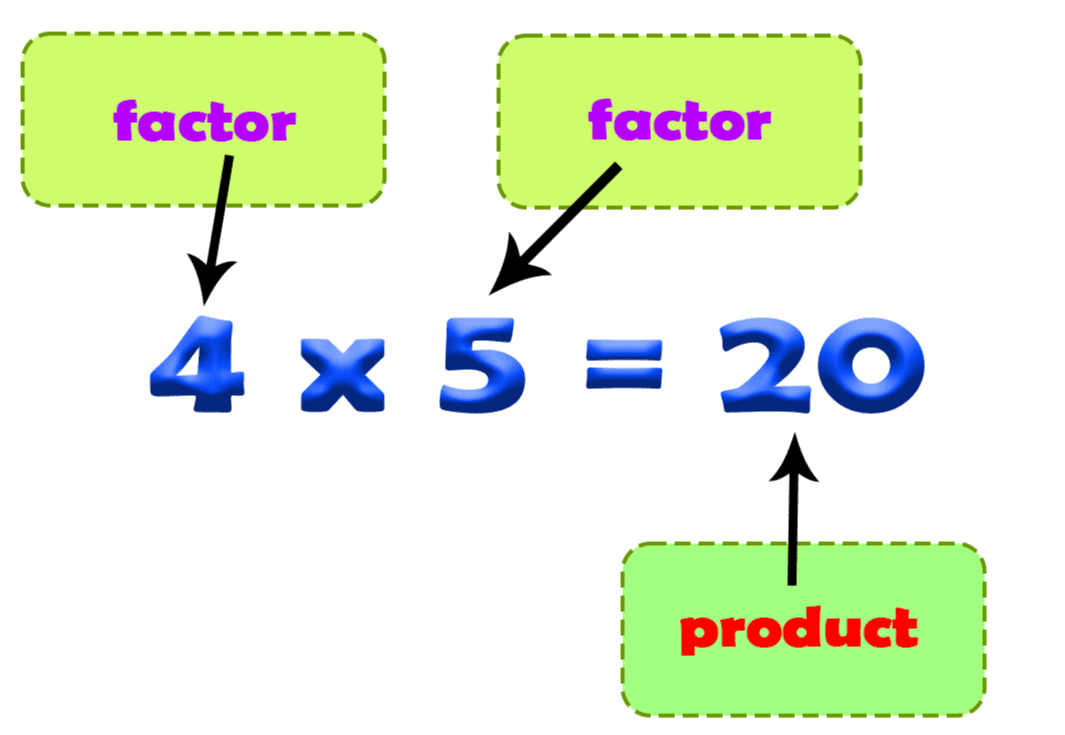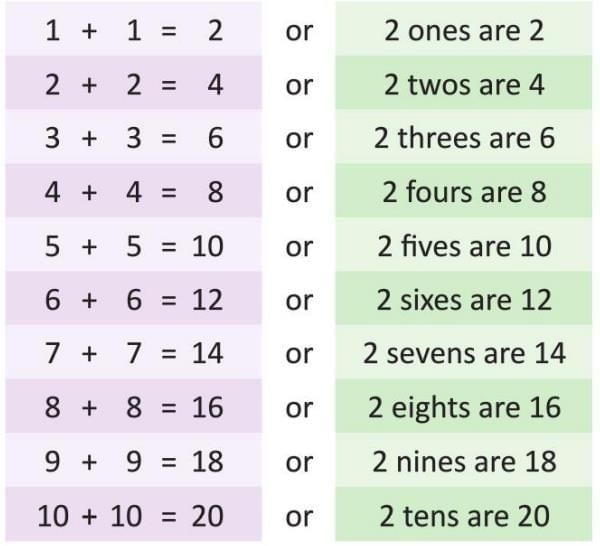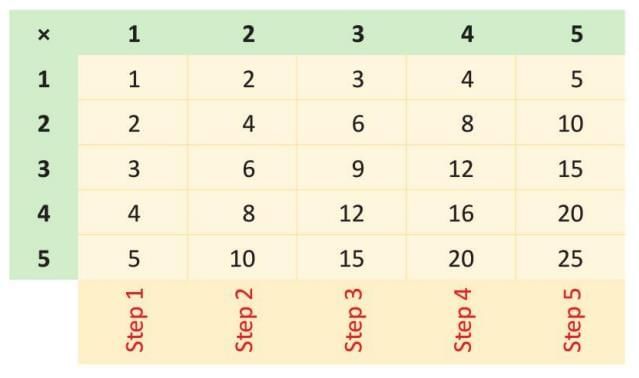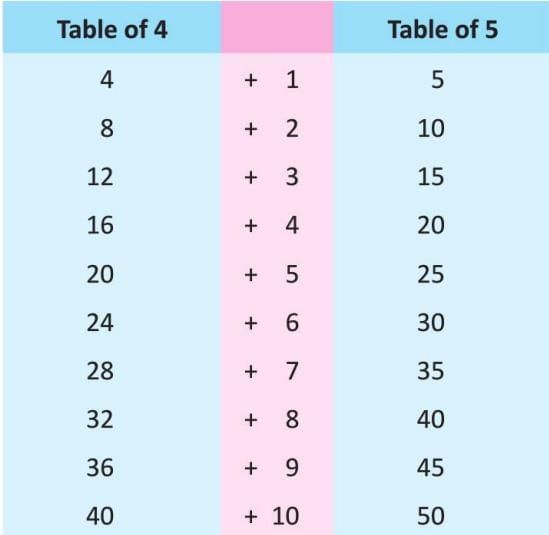Multiplication Chapter Notes | General Mathematics for Primary 3 PDF Download
| Table of contents |

|
| Introduction |

|
| Multiplication |

|
| Constructing Multiplication Tables |

|
| Patterns in Tables |

|
Introduction
Multiplication is like a magic trick that helps us add the same number many times quickly! Imagine you have groups of chocolates, and instead of counting each one slowly, multiplication helps you find the total in a snap. This chapter will teach you fun ways to learn multiplication, like making tables, spotting patterns, and even using sticks to understand it better. Get ready to explore how numbers work together!

Multiplication
Multiplication is adding the same number multiple times to get a total, called the product. The symbol '×' is used to show multiplication.
 Steps to understand multiplication:
Steps to understand multiplication:
- Identify the number to be added repeatedly.
- Count how many times it is added.
- Write it as a multiplication expression.
- Calculate the product.
Example: If there are 5 groups of 2 chimpanzees, it’s like adding 2 + 2 + 2 + 2 + 2 = 10. This can be written as 5 × 2 = 10, meaning 5 twos are 10.


Constructing Multiplication Tables
Multiplication tables show the results of multiplying a number by 1 to 10.
Tables can be made using different methods:
- Repeated addition: Adding the same number multiple times.
- Grid patterns: Using a grid to show multiplication results.
- Skip counting: Counting by a number to get the next result.
- Adding 1 to 10: Building a table by adding numbers to the previous table.
Constructing Multiplication Tables by Repeated Addition
Repeated addition means adding the same number several times to form a multiplication table.
Steps to construct a table using repeated addition:
- Start with the number to be multiplied (e.g., 2).
- Add it as many times as needed (e.g., for 2 × 3, add 2 three times).
- Write the result as product.
- Repeat for numbers 1 to 10 to complete the table.
Example: For the table of 2:
- 2 + 2 = 4 (2 twos are 4, or 2 × 2 = 4)
- 4 + 4 = 8 (2 fours are 8, or 2 × 4 = 8)
- Continue up to 10 + 10 = 20 (2 tens are 20, or 2 × 10 = 20).

Constructing Multiplication Tables by Skip Counting
Skip counting means counting by a specific number to build a multiplication table.
Steps to construct a table using skip counting:
- Choose the number for the table (e.g., 4).
- Start from 0 and add the number repeatedly.
- List the results as a multiplication table.
Example: For the table of 4, skip count by 4s:

This gives
4 × 1 = 4,
4 × 2 = 8,
up to 4 × 10 = 40.
Constructing Multiplication Tables by Grid Patterns
Create a grid with numbers 1 to 5 on the top and sides. Place a multiplication sign (×) in the top-left corner.
Steps to construct a table using a grid:
- Step 1: Skip count in 1s and fill the second column.
- Step 2: Skip count in 2s and fill the third column.
- Step 3: Skip count in 3s and fill the fourth column.
- Step 4: Skip count in 4s and fill the fifth column.
- Step 5: Skip count in 5s and fill the sixth column.
Each row or column gives a multiplication table.

Example: In a grid with numbers 1 to 5:
- Row for 2:
- 2 × 1 = 2,
- 2 × 2 = 4,
- 2 × 3 = 6,
- 2 × 4 = 8,
- 2 × 5 = 10.
- This forms the table of 2: 2, 4, 6, 8, 10.
Constructing Multiplication Tables by Adding 1 to 10
This method builds a new table by adding numbers to the previous table.
Steps to construct a table (e.g., table of 5 from table of 4):
- Write the table of the previous number (e.g., table of 4).
- Add 1 to 10 progressively to each result.
- The new results form the table of the next number.
Example: To get the table of 5 from the table of 4:

Patterns in Tables
Multiplication tables have patterns that make them easier to learn.
Steps to identify patterns:
- Look at the results of a table.
- Notice repeating digits or sequences.
- Use these patterns to remember the table.
Example:
- Table of 2: Each result is double the number (e.g., 2 × 3 = 6, which is 3 + 3).
- Table of 5: Results end in 0 or 5 (e.g., 5, 10, 15, 20).
|
15 videos|82 docs|29 tests
|














